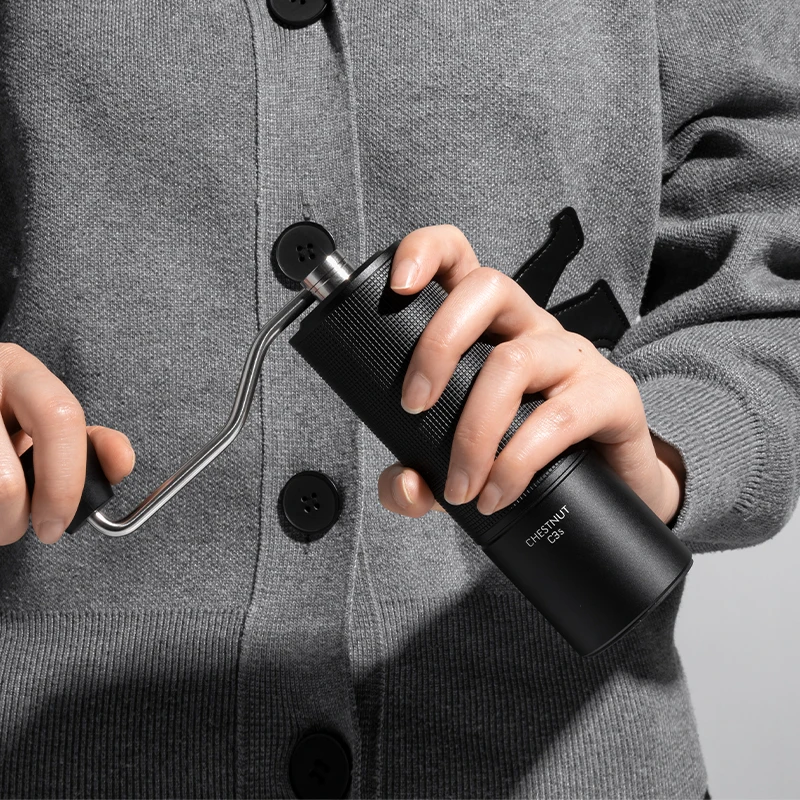Understanding Flat Burr Coffee Grinders: The Foundation of Exceptional Brewing
Coffee enthusiasts know that the journey to a perfect cup begins long before water meets grounds. It starts with the humble coffee bean and how it’s transformed into brewable particles. At the heart of this transformation lies the coffee grinder, with flat burr grinders standing out as a premium option for those serious about their brew.
Flat burr grinders feature two parallel, ring-shaped burrs that face each other. One burr remains stationary while the other rotates, creating a precise grinding action as coffee beans pass between them. Unlike blade grinders that chop beans haphazardly, or even conical burrs with their cone-shaped design, flat burrs crush beans between two flat surfaces with remarkable consistency.
This design is no accident—it’s precision engineering aimed at one goal: extracting the full potential from your coffee beans. When coffee is ground with consistent particle size, water interacts with it evenly during brewing, leading to balanced extraction and superior flavor.
What is a Flat Burr Grinder?
A precision coffee grinding tool featuring two parallel, ring-shaped grinding discs (burrs). Beans are crushed between these surfaces with high consistency, resulting in uniform particle size essential for balanced coffee extraction.
The history of flat burr technology spans centuries, with continual refinements leading to today’s high-precision models. Modern flat burr hand grinders typically feature hardened steel or ceramic burrs, materials chosen for their durability and precision cutting edges.
Understanding the manual flat burr grinder mechanics gives you insight into why these tools command respect among coffee professionals. The parallel grinding action creates a foundation for consistency that affects every aspect of your brewing process, from extraction time to flavor clarity.
Grind Consistency: The Ultimate Precision Advantage of Flat Burrs
When coffee professionals talk about the superiority of flat burr grinders, consistency is typically the first advantage they mention—and for good reason. This consistency isn’t just a technical specification; it’s the foundation that determines the quality of your coffee extraction.
Flat burrs excel at producing what coffee experts call a “unimodal” particle size distribution. In simpler terms, this means that most coffee particles end up remarkably similar in size, with fewer outliers like fine powder (“fines”) or larger chunks (“boulders”). This consistency is achieved through the parallel grinding surfaces that create an even pressure across all beans passing through.
Why does this matter for your coffee? When hot water meets coffee grounds, it extracts compounds at different rates depending on particle size:
– Too many fines: Over-extraction leading to bitterness
– Too many boulders: Under-extraction resulting in sourness
– Consistent particles: Balanced extraction with full flavor potential
The grind particle uniformity in flat burr systems directly impacts extraction quality. When water passes through a bed of uniformly-sized coffee particles, it extracts compounds at a consistent rate, resulting in what experts call flat burr uniform extraction.
This consistency advantage becomes particularly evident when brewing methods demand precision. For espresso, the difference between a perfect shot and a disappointing one can come down to grind consistency. For pour-over methods, even extraction depends heavily on particles being similar in size.
The stability of quality flat burr grinders also contributes to this consistency. Premium models feature robust motor systems (in electric versions) or stable grinding mechanisms (in manual versions) that maintain burr alignment under pressure, ensuring that the distance between burrs remains constant throughout the grinding process.
Enhanced Flavor Clarity: Unlocking the Full Potential of Your Beans
The technical advantage of grind consistency translates directly to what matters most: the flavor in your cup. Flat burr grinders excel at unlocking what coffee professionals call “flavor clarity” – the ability to distinguish individual flavor notes rather than experiencing them as a muddled blend.
When coffee particles are uniform in size, they extract at similar rates, allowing distinct flavor characteristics to shine through. This clarity becomes particularly noticeable with specialty coffees that feature complex flavor profiles. A Ethiopian Yirgacheffe might reveal distinct floral notes, bergamot, and citrus acidity when ground with a flat burr grinder – flavors that might otherwise blend together indistinguishably with less precise grinding methods.
This enhanced clarity stems from the way precision manual grinders handle the coffee beans. By crushing them between parallel surfaces with minimal heat transfer, flat burrs preserve volatile compounds responsible for aroma and flavor nuance. The result is a cup that reveals the bean’s full character – from bright top notes to rich mid-tones and lingering finish.
Different roast levels also respond uniquely to flat burr grinding. Light roasts, which preserve more of the bean’s original characteristics, particularly benefit from the precision of flat burrs. Their delicate acids and subtle flavor compounds remain distinct rather than being masked by inconsistent extraction. Medium roasts achieve better balance between acidity and sweetness, while dark roasts can retain their rich body without excessive bitterness.
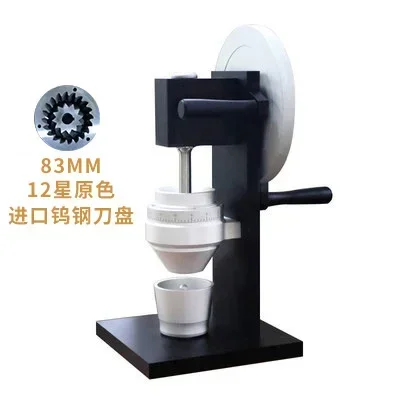
The difference becomes especially noticeable when tasting coffees side by side. A Panama Gesha might present distinct jasmine, honeysuckle, and tropical fruit notes when ground with quality flat burrs, while the same beans ground inconsistently might yield a pleasant but less distinctive cup lacking the clarity that reveals its premium character.
Espresso Excellence: Why Flat Burrs Excel for Precision Espresso Brewing
Espresso preparation represents perhaps the most demanding brewing method in coffee, requiring exceptional precision at every step. This is where flat burr grinders truly shine, offering several critical advantages for espresso enthusiasts.
The intense pressure and brief extraction time of espresso (typically 25-30 seconds) magnify any inconsistency in your coffee grounds. Flat burrs create the uniform particle size distribution essential for even resistance to pressurized water, resulting in balanced extraction throughout the coffee puck.
Many manual espresso grinders with flat burrs excel at producing the fine, consistent grind required for proper espresso extraction. These grinders allow for micro-adjustments that help you “dial in” your espresso – making tiny changes to grind size that significantly impact flow rate, extraction time, and ultimately flavor.
| Grind Consistency Factor | Impact on Espresso | Flat Burr Advantage |
|---|---|---|
| Particle uniformity | Even extraction pressure | Higher percentage of uniform particles |
| Fines percentage | Affects flow rate and potential channeling | Typically produces fewer fines |
| Adjustment precision | Ability to dial in shots | Many flat burr designs offer micro-adjustments |
| Repeatability | Consistency between shots | Stable grinding mechanism maintains settings |
Professional baristas often prefer flat burrs for commercial espresso preparation precisely because of this consistency advantage. When serving dozens or hundreds of espresso drinks daily, the ability to maintain precise grind quality becomes essential for quality control.
The impact of burr shape on espresso consistency becomes particularly evident when troubleshooting common espresso problems. Channeling (water finding the path of least resistance through the puck) is less likely with uniform particles. Similarly, the even extraction that flat burrs enable helps prevent the simultaneous under and over-extraction that leads to both sourness and bitterness in the same shot.
Manual coffee grinders for espresso with flat burrs also provide the fine adjustment capability that espresso demands. This precision allows you to respond to variables like bean age, humidity, and temperature that affect extraction dynamics.
Temperature Stability: The Engineering Behind Cool Grinding
One consideration with any grinding process is heat generation – friction between burrs and beans can raise temperatures enough to affect coffee oils and volatile compounds. While this is sometimes cited as a concern with flat burrs, quality models address this through thoughtful engineering.
Modern flat burr grinders incorporate several design features to manage heat effectively:
- Material selection that optimizes heat dissipation
- Efficient motor design that minimizes unnecessary friction
- Grinding chamber ventilation that helps dissipate heat
- Burr geometry optimized to reduce heat-generating friction
These features help maintain the temperature stability crucial for preserving delicate flavor compounds. When coffee beans experience significant heat during grinding, oils can prematurely release and volatile aromatic compounds can dissipate before brewing even begins.
Understanding heat transfer in manual coffee grinders helps appreciate how quality manual models often have an advantage here. The human power source typically generates less heat than high-speed motors, and the typically slower grinding pace allows for better heat dissipation between burrs.
For those pursuing the absolute pinnacle of espresso quality, mastering espresso precision grind settings involves understanding how temperature affects extraction. By maintaining cooler grinding temperatures, flat burr grinders help preserve the integrity of coffee oils and aromatics until the moment hot water meets grounds – exactly when you want these compounds to release their flavors.
Premium flat burr grinders often feature burrs made from materials selected specifically for their thermal properties. Certain steel alloys and ceramic compounds combine durability with excellent heat management, ensuring that your coffee grounds remain cool throughout the grinding process.
Brewing Method Compatibility: Optimizing Your Coffee Experience
One of the greatest strengths of flat burr grinders is their versatility across different brewing methods. Their exceptional consistency makes them suitable for virtually any preparation technique, though they particularly excel with methods that demand precision.
| Brewing Method | Optimal Grind | Flat Burr Advantage |
|---|---|---|
| Espresso | Very fine, highly consistent | Exceptional uniformity prevents channeling; micro-adjustment capability |
| Pour Over | Medium-fine, uniform | Even extraction across the coffee bed; fewer fines that would cause clogging |
| French Press | Coarse, consistent | Fewer fines that would pass through the mesh filter; cleaner cup |
| AeroPress | Fine to medium, adjustable | Versatility to achieve different flavor profiles through grind adjustment |
| Cold Brew | Coarse, very consistent | Even extraction over long brewing time; fewer fines for cleaner filtration |
Fine adjustment hand grinders with flat burrs offer the precision necessary to optimize your grind for different brewing methods. This versatility is particularly valuable for coffee enthusiasts who enjoy exploring different preparation techniques.
For pour-over methods like V60 or Chemex, the uniform particle size from flat burrs creates an even coffee bed that water percolates through consistently. This results in balanced extraction where all grounds contribute equally to the final cup.
Immersion methods like French press benefit from the reduced “fines” (very small particles) that flat burrs typically produce. These tiny particles can pass through mesh filters, creating sediment in the cup and continuing to extract (often over-extract) even after pressing. The consistency of flat burr grinding minimizes this issue.
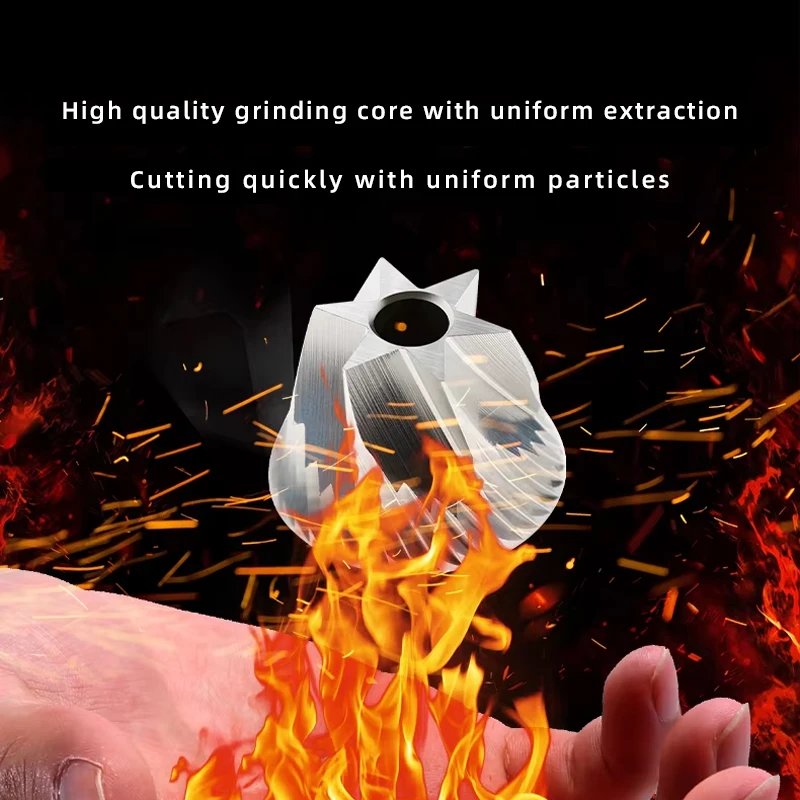
Cold brew, with its extended extraction time (often 12-24 hours), particularly benefits from the consistency of flat burr grinding. Any inconsistency in particle size becomes magnified during long extraction periods, with fines over-extracting and creating bitterness while larger chunks remain under-extracted.
The ability to precisely adjust grind size with many flat burr models means you can fine-tune your preparation for each brewing method, coffee origin, and even adapt to different roast levels – all with a single quality grinder.
Longevity and Durability: The Long-Term Value Advantage
Quality flat burr grinders represent an investment, but they deliver exceptional value over time through their impressive durability and longevity. Several factors contribute to this long-term advantage:
- Material quality: Premium flat burrs are typically made from hardened steel or specialized ceramics designed for exceptional wear resistance
- Simple mechanical design: Fewer moving parts in quality models means fewer potential failure points
- Serviceability: Many high-end flat burr grinders are designed for easy burr replacement when eventually needed
- Consistent performance: Quality doesn’t degrade significantly over time, maintaining grind consistency throughout the life of the burrs
Stainless steel manual coffee grinders with flat burrs often represent the pinnacle of durability. Quality steel burrs can typically process hundreds of pounds of coffee before showing significant wear, translating to many years of daily use for most home brewers.
The longevity advantage includes:
- Extended burr life: Quality hardened steel flat burrs can process 500-1500 pounds of coffee before replacement (varies by model and usage)
- Consistent performance over time: Minimal degradation in grind quality as burrs age
- Lower lifetime cost: When calculated as cost-per-cup over the grinder’s lifetime
- Sustainability benefit: Less frequent replacement means less manufacturing impact
Maintaining manual coffee grinders properly extends their lifespan even further. Simple practices like regular cleaning to remove coffee oils and occasional calibration checks help ensure your investment continues performing optimally for years.
This durability factor makes quality flat burr grinders particularly appealing for serious coffee enthusiasts who view their equipment as a long-term investment in daily enjoyment rather than a disposable appliance.
Customization and Precision: Fine-Tuning Your Perfect Cup
Perhaps no advantage of flat burr grinders is more appreciated by coffee enthusiasts than their exceptional adjustment precision. This capability transforms coffee preparation from approximate to exact, allowing you to dial in your perfect cup with remarkable control.
Quality flat burr grinders typically offer adjustment systems that fall into two main categories:
- Stepped adjustments: Fixed increments that provide consistent, repeatable settings
- Stepless systems: Infinite adjustment points for ultimate precision, particularly valuable for espresso
This precision becomes particularly evident when comparing flat vs. conical burr manual grinders. While both can produce excellent results, many flat burr designs offer finer adjustment capability that allows you to make minute changes to address specific extraction challenges.
The ability to make these precise adjustments delivers several practical benefits:
- Compensating for bean differences (origin, processing method, roast level)
- Adapting to environmental factors (humidity, temperature) that affect extraction
- Exploring extraction variables to discover your preference for a particular coffee
- Maintaining consistency between brewing sessions
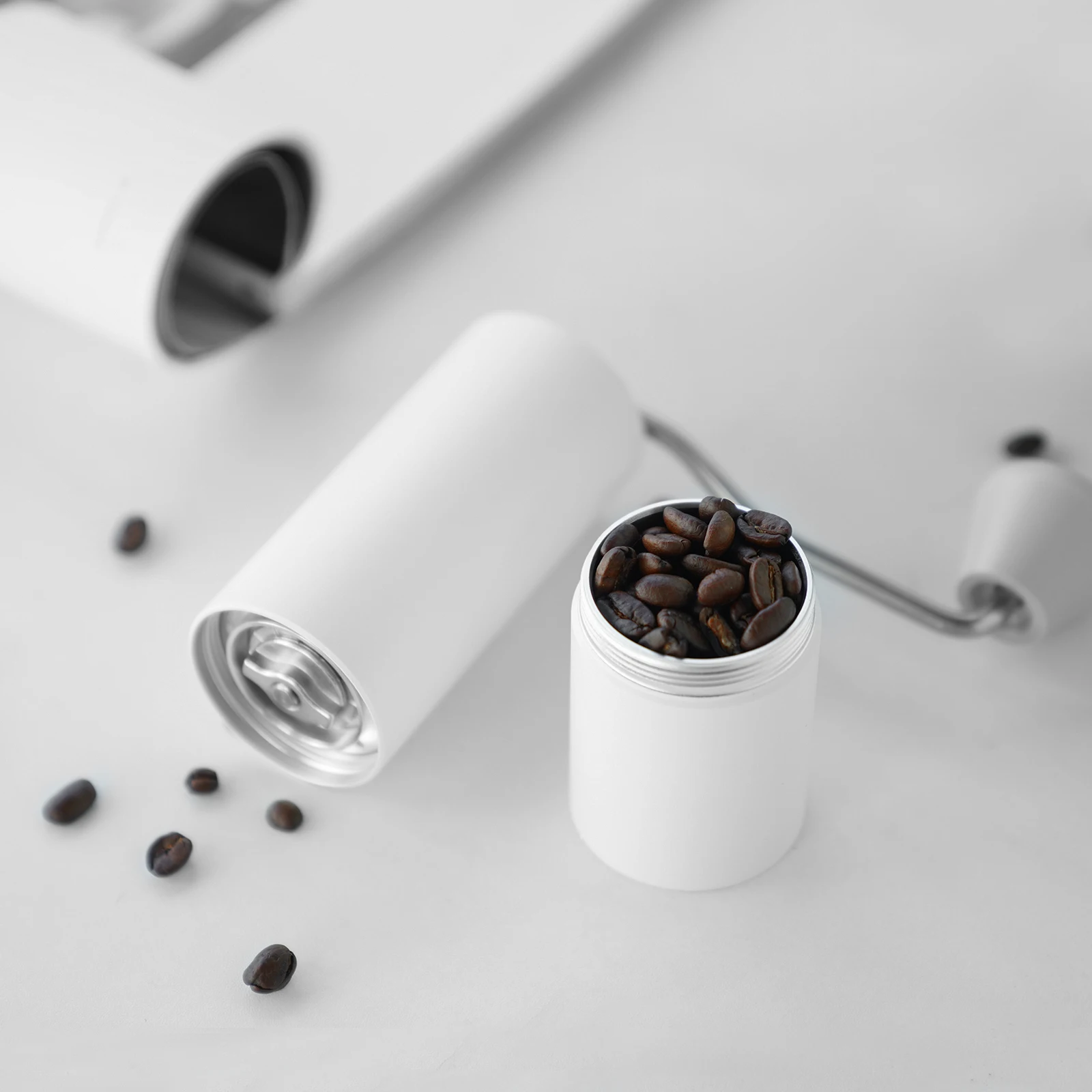
This customization capability is particularly valuable when working with specialty coffee, where subtle differences in grind size can highlight or mute specific flavor characteristics. A light-roasted Ethiopian might reveal completely different flavor notes with a slight adjustment in grind size, allowing you to emphasize either bright acidity or subtle sweetness based on your preference.
The precision advantage extends to repeatability as well. Once you’ve found your ideal setting for a particular coffee and brewing method, quality flat burr grinders allow you to return to that exact setting consistently, ensuring that your perfect cup remains perfect day after day.
Professional Choice: Why Specialty Cafés Prefer Flat Burrs
Walk into world-class specialty coffee shops, and you’ll frequently find flat burr grinders being used for much of their precision grinding work. This professional preference stems from several practical considerations that apply equally to serious home brewing.
Specialty cafés stake their reputation on consistency—customers expect the same exceptional experience with every visit. The consistency advantage of flat burr grinders directly supports this business need, ensuring that each cup meets the high standards these establishments set.
Commercial environments also highlight the durability advantages of quality hand burr grinders with flat burrs. When grinding dozens or hundreds of pounds of coffee weekly, longevity becomes a critical consideration. The wear resistance of premium flat burrs translates to maintained quality and reduced replacement frequency.
Many coffee professionals also appreciate how flat burrs handle different coffee varieties. When a café offers multiple single-origin options and blends, having equipment that performs consistently across different bean densities, moisture contents, and roast levels provides valuable versatility.
The choice between ceramic vs. steel burr coffee grinders often comes down to specific use cases, with many professionals preferring steel for its durability and precision in high-volume environments. However, both materials can provide excellent results when designed with quality in mind.
Professional baristas often develop intimate knowledge of their equipment, learning to make micro-adjustments based on factors ranging from ambient humidity to bean age. The precision adjustment capability of flat burr grinders supports this expertise, allowing for the fine-tuning that distinguishes exceptional coffee service.
While home enthusiasts may not face the same volume demands as commercial establishments, the same principles of consistency, durability, and precision make flat burr grinders equally valuable in the domestic setting.
Advanced Design Features: Innovations in Modern Flat Burr Grinders
The world of flat burr grinders continues to evolve, with manufacturers introducing innovative features that enhance performance and user experience. These advancements address historical challenges while pushing the boundaries of precision grinding.
Modern design innovations in premium flat burr grinders include:
- Low retention systems: Specialized designs that minimize the amount of ground coffee retained in the grinding chamber, reducing waste and improving dose consistency
- Anti-static features: Materials and design elements that reduce static buildup, which can cause grounds to cling to surfaces and create mess
- Alignment systems: Precision mechanisms that ensure burrs remain perfectly parallel during operation for optimal consistency
- Cooling technologies: Design elements that effectively dissipate heat during grinding to protect flavor compounds
- Noise reduction: Engineering solutions that minimize operational volume without compromising performance
Unlocking perfect grind low retention flat burr designs represent a significant advancement for precision-minded users. Reduced retention means less ground coffee remains in the grinder between uses, improving dose accuracy and reducing waste.
For those with space constraints, compact flat burr grinders now offer premium performance in smaller footprints. These space-efficient designs maintain grinding quality while fitting comfortably in modest kitchens or travel setups.
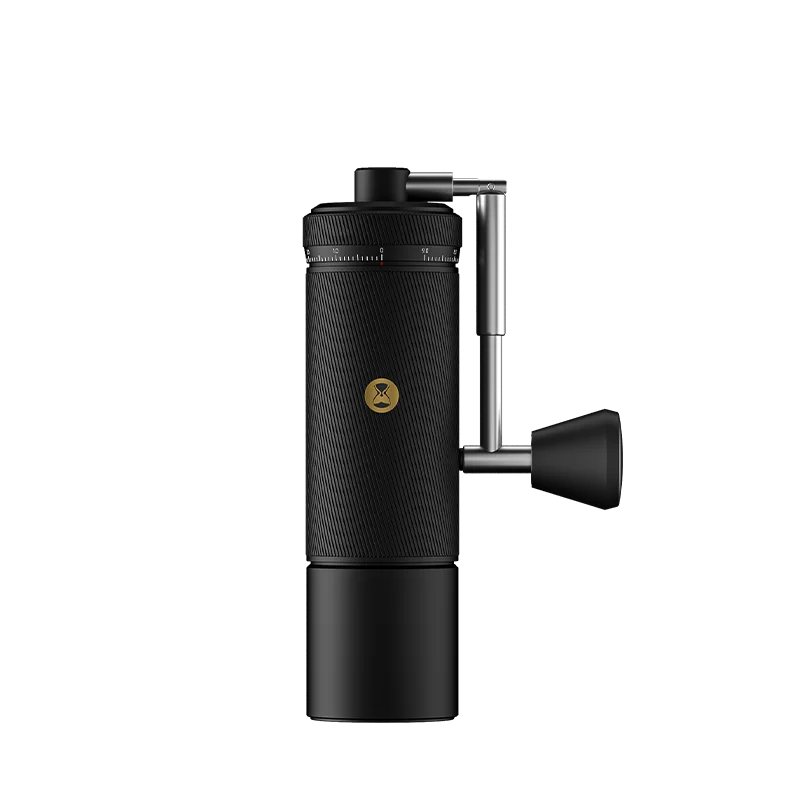
Materials science has also advanced significantly, with modern manufacturing techniques producing burrs with exceptional edge retention and precision. These improvements translate to better performance and longer service life, enhancing the already impressive durability of quality flat burr grinders.
User interface improvements make these precision tools more accessible even to those new to specialty coffee. Intuitive adjustment mechanisms and clear markings help users navigate the sometimes intimidating world of grind size optimization.
These innovations collectively represent the ongoing refinement of flat burr technology, addressing potential limitations while enhancing the core advantages that make these grinders prized by coffee enthusiasts.
Cost Considerations: Understanding the Value Proposition
Quality flat burr grinders typically represent a significant investment compared to basic blade grinders or entry-level burr grinders. Understanding the value proposition helps put this investment into perspective.
Several factors contribute to the higher price point of premium flat burr grinders:
- Precision manufacturing of burrs to tight tolerances
- Quality materials that maintain performance over time
- Robust construction that ensures stability during grinding
- Engineering complexity in adjustment mechanisms
- Research and development costs for innovations
When considering the value equation, it’s helpful to think beyond the upfront cost and consider the total cost of ownership. All metal hand grinders with quality flat burrs often represent excellent long-term value despite higher initial prices.
The calculation changes when you consider:
- Longevity (years or decades of service for quality models)
- Consistency throughout the ownership period
- Coffee savings from brewing at home versus café purchases
- Enhanced enjoyment from better quality coffee
- Avoided costs of replacement for lower-quality grinders
For many coffee enthusiasts, the investment in a quality flat burr grinder pays dividends with every cup, transforming an ordinary daily ritual into an exceptional experience. The ability to unlock the full potential of specialty coffee beans—which often represent their own significant investment—provides ongoing value that accumulates over years of use.
Fine Adjustment Hand Grinder, Precision Manual Grinder, Travel Coffee Grinder
Price range: $185.11 through $494.63 Select options This product has multiple variants. The options may be chosen on the product pageHand Burr Grinder, Hand Crank Coffee Grinder, Manual Espresso Grinder, Portable Coffee Grinder
Price range: $262.72 through $300.22 Select options This product has multiple variants. The options may be chosen on the product pageManual Burr Mill, Manual Coffee Grinder Stainless Steel, Manual Coffee Mill Grinder, Mechanical Coffee Grinder
Price range: $127.26 through $130.32 Select options This product has multiple variants. The options may be chosen on the product pageHand Burr Grinder, Manual Coffee Grinder Stainless Steel, Precision Manual Grinder
Price range: $183.64 through $187.52 Select options This product has multiple variants. The options may be chosen on the product page
When shopping at Savor Suite, consider the long-term value represented by our carefully curated selection of quality grinders rather than focusing solely on the initial price point. Each grinder in our collection has been selected for its ability to deliver exceptional performance over years of daily use.
Is a Flat Burr Grinder Right for You? Decision Guidance
With a clear understanding of the advantages flat burr grinders offer, the question becomes: is this the right choice for your coffee journey? The answer depends on several factors related to your preferences, brewing methods, and coffee goals.
Who benefits most from flat burr grinders?
Flat burr grinders are particularly well-suited for coffee enthusiasts who:
– Prioritize consistency and precision in their brewing
– Enjoy espresso and other methods that demand fine grind adjustment
– Appreciate clarity of flavor notes in specialty coffee
– View their coffee equipment as a long-term investment
– Have some experience with coffee brewing and want to advance their skills
How do your brewing preferences align?
Your preferred brewing methods significantly impact whether a flat burr grinder represents the best value:
– Primarily espresso: Flat burrs offer exceptional advantages for dialing in shots
– Pour-over specialist: The consistency of flat burrs enhances extraction clarity
– Multiple brewing methods: The adjustability of flat burrs provides valuable versatility
– French press only: The advantages may be less pronounced for exclusively coarse grinding
What are your flavor priorities?
Different coffee drinkers prioritize different aspects of the flavor experience:
– Clarity and distinction of flavor notes: Flat burrs excel at highlighting individual flavor characteristics
– Maximum sweetness: The even extraction from consistent grinding enhances perceived sweetness
– Rich texture: Consistency helps achieve desired mouthfeel without negative attributes
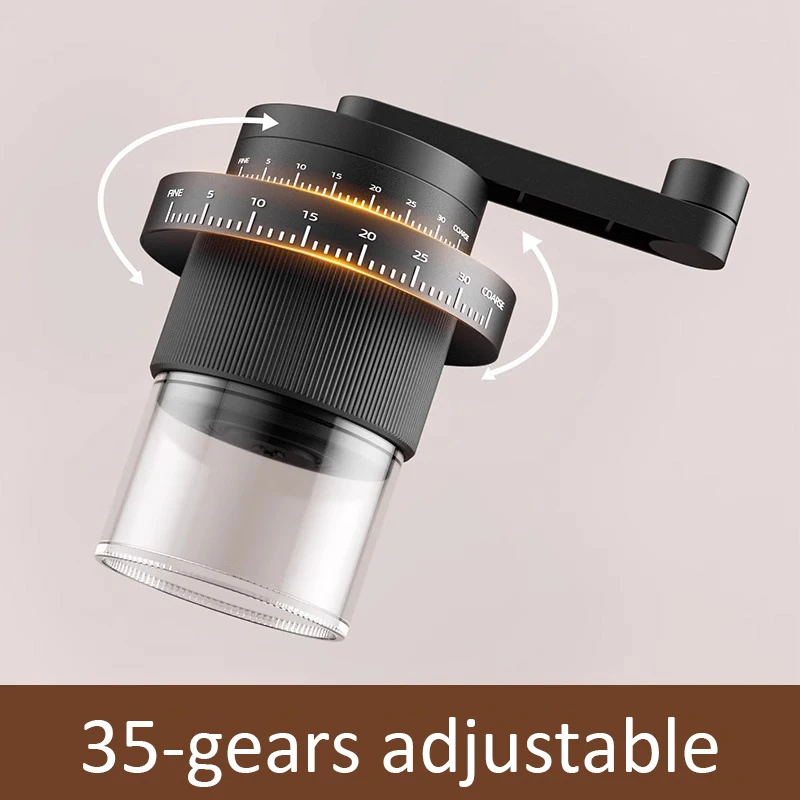
For many coffee enthusiasts, flat burr grinders for exceptional coffee represent an ideal choice that aligns with their quality expectations. However, it’s worth understanding the full spectrum of options when comparing burr blade grinders to make an informed decision.
The question isn’t simply whether flat burr grinders are objectively “better,” but rather whether their specific advantages align with your personal coffee priorities, preparation methods, and value calculations.
Managing Potential Limitations: Practical Solutions
While flat burr grinders offer numerous advantages, they do come with some considerations worth addressing. Understanding these potential limitations—and their solutions—helps you make an informed decision and get the most from your grinder.
Retention Considerations
Some flat burr designs can retain small amounts of ground coffee in the grinding chamber between uses. This can affect dose consistency and result in some stale grounds mixing with fresh ones.
Solutions:
– Look for models with manual coffee grinders stainless steel flat burrs designed for low retention
– Implement a brief “purge” of a small amount of beans before your actual grinding
– Use a small brush to clean the grinding chamber regularly
– Consider single-dose grinding workflows that clear the chamber between uses
Heat Management
During extended grinding sessions, heat can build up in some flat burr grinders through friction.
Solutions:
– Consider manual grinders which typically generate less heat
– Allow cooling time between multiple grinding sessions
– Choose models with heat-dissipating designs and materials
– Avoid grinding very large batches in a single session
Size and Space Considerations
Some flat burr grinders, particularly electric models, can have a larger footprint than conical alternatives.
Solutions:
– Explore compact models designed for smaller spaces
– Consider manual flat burr grinders, which often have smaller profiles
– Evaluate your counter space and storage options when selecting a model
Noise Factors
Grinding coffee inevitably produces some noise, though this varies significantly between models.
Solutions:
– Manual grinders typically operate more quietly than electric ones
– Look for models that advertise noise reduction features
– Consider grinding timing to minimize disturbance to others
With thoughtful selection and proper technique, these potential limitations can be effectively managed, allowing you to enjoy the considerable advantages that flat burr grinders offer without significant drawbacks.
Frequently Asked Questions About Flat Burr Grinders
Are flat burr grinders better than conical burr grinders?
Rather than one being universally “better,” each style has distinct characteristics. Flat burrs typically excel at producing very consistent particle size with fewer fines, which contributes to clean, clear flavor profiles. They’re particularly valued for their precision with espresso and ability to highlight distinct flavor notes. The choice depends on your specific coffee preferences, brewing methods, and priorities.
Do flat burrs produce more or fewer fines than other grinder types?
Quality flat burr grinders typically produce fewer fines (very small particles) than many other grinder types when properly adjusted and maintained. This reduced fine production contributes to cleaner cup clarity and more even extraction. However, actual performance varies between specific models and is affected by factors like burr quality, alignment, and bean characteristics.
How long do quality flat burrs typically last before replacement?
Premium hardened steel flat burrs in quality grinders can process approximately 500-1500 pounds of coffee before requiring replacement, depending on the specific model, materials, and usage patterns. For a typical home user brewing daily, this might translate to 5-10+ years of use. Ceramic burrs may last even longer but are more susceptible to damage from foreign objects.
Are flat burr grinders harder to clean and maintain?
Flat burr grinders aren’t necessarily harder to clean, but they do benefit from regular maintenance to perform at their best. The parallel burr design sometimes retains slightly more grounds between uses than some conical designs. Regular cleaning (following manufacturer guidelines) helps maintain optimal performance. Many quality models are designed with maintenance in mind, with easily accessible burr chambers.
What’s the main difference in taste between coffee ground with flat versus conical burrs?
Coffee ground with quality flat burrs often exhibits greater clarity of individual flavor notes and “brighter” characteristics due to more uniform extraction. Conical burrs sometimes produce a slightly higher percentage of fines, which can contribute to increased body and perceived richness. These differences are subtle and influenced by many factors including the specific grinder model, coffee beans, and brewing method.
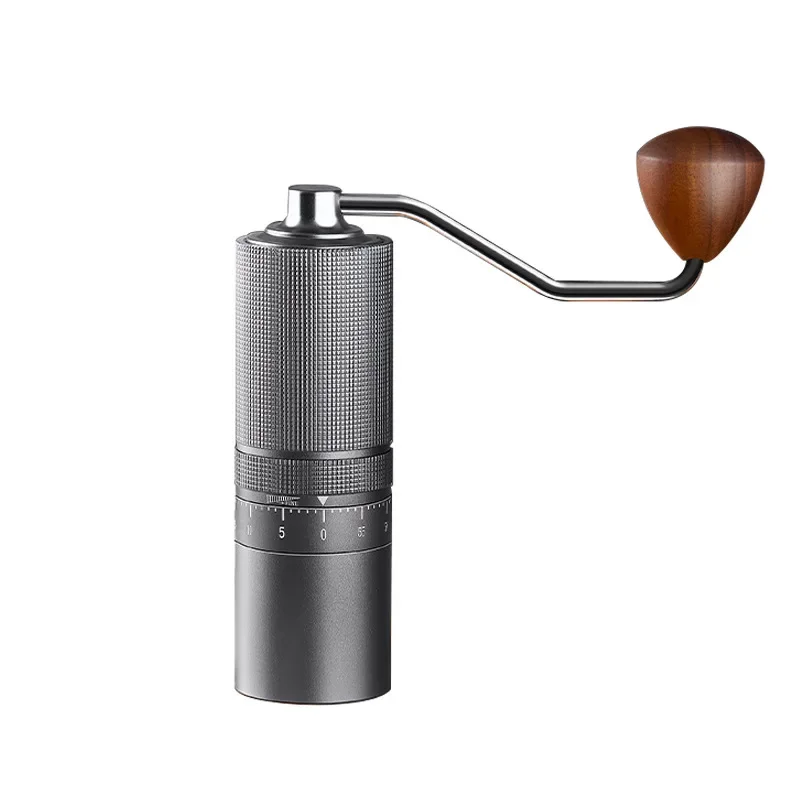
Do flat burr grinders work well for both espresso and filter coffee?
Yes, quality flat burr grinders excel at both espresso and filter brewing methods. Their consistency advantage benefits espresso by enabling even resistance to pressurized water, while filter methods benefit from the uniform extraction that consistent particles provide. The definitive guide burr size coffee grind demonstrates how different burr configurations can be optimized for various brewing methods.
How important is the material of flat burrs (steel vs. ceramic)?
Both materials can produce excellent results, but they offer different characteristics. Steel burrs typically offer greater durability against foreign objects, potentially sharper cutting edges when new, and are standard in most professional environments. Ceramic burrs tend to remain sharp longer, generate less heat, but are more brittle if they encounter stones or other hard objects. For most home users, quality of manufacturing and design matters more than the specific material.
Can flat burr grinders handle oily, dark roast beans effectively?
Yes, quality flat burr grinders can handle oily dark roast beans, though some models perform better than others with these challenging beans. Look for grinders with features like powerful motors (in electric models), effective bean feeding mechanisms, and burr designs that resist clogging. Regular cleaning becomes particularly important when grinding oily beans to prevent buildup that can affect performance.

